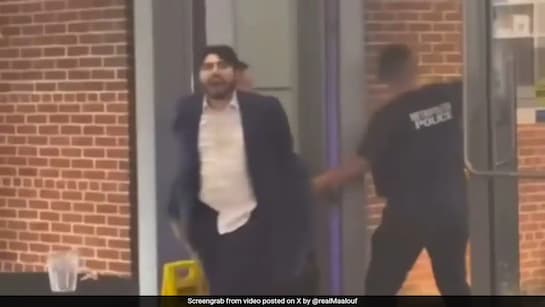“`html
Estimated Reading Time: 7 minutes
Key Takeaways
- Elias Rodriguez’s story highlights the power and risks of AI-driven law enforcement.
- Technological advancements are reshaping public opinion and privacy at rapid speeds.
- This case may be a harbinger for future societal shifts in privacy, technology, and polarized public discourse.
Table of Contents
- The Night That Changed Everything
- Who Is Elias Rodriguez? More Than Just a Suspect
- The Age of the Algorithmic Manhunt
- Pause: Tech or Overreach?
- Viral Fuel: How Culture and Conflict Amplified the Story
- Disruption or Despair: What the Rodriguez Case Portends for AI and Society
- Moral Trenches, Technological Trenches
- Conclusion: The World After Rodriguez
The Night That Changed Everything
It started as a routine Wednesday in Washington, DC. By evening, it had morphed into one of the most scrutinized crimes of 2025. At approximately 8:35 p.m., shots rang out near the Capital Jewish Museum. Within moments, two staffers from the nearby Israeli Embassy—Yaron Lischinsky and Sarah Lynn Milgrim—lay dead CBS News.
As authorities cordoned off the scene, jittery cellphone footage—from bystanders and nearby cameras—began populating the chaotic feeds of Twitter, TikTok, and live-news platforms. Within an hour, journalists on the ground reported a man shouting “Free Palestine!” as police arrested him amid a crowd YouTube. The suspect’s identity? Elias Rodriguez, a 30-year-old Chicagoan with a trail that led back to anti-war activism, and—according to some reports—a complex family history shadowed by the legacy of conflict NewsNationNow.
The wheels of both justice and digital scrutiny had begun to spin. But what would emerge in the following 48 hours would underscore the era we now inhabit: where AI surveillance, algorithmic virality, and amplified tribalism transform every high-profile crime into a global moment https://nextmodlabs.com/why-your-startups-competitor-is-synthetic-brain/.
Who Is Elias Rodriguez? More Than Just a Suspect
For many, the question burned hotter than the headlines: Who is this man? The answer—pieced together with unprecedented speed—illustrates how modern information machines operate.
- Background: Elias Rodriguez grew up in Chicago’s Albany Park, the son of an Iraq War veteran. Neighbors described him as quiet but passionate; public records linked him to multiple jobs around the city Chicago Sun-Times.
- Activism: Reports surfaced quickly about his involvement with various anti-war collectives—groups who, within hours of his arrest, moved to disavow his actions and distance themselves from any extremist rhetoric The Times.
- Digital Signals: AI-powered investigative engines scraped social posts, employment records, and known associates, painting a digital profile that was, at moments, both illuminating and chillingly incomplete. Within hours, millions had seen his face, his timeline, and the speculative theories about his motives https://nextmodlabs.com/ai-whisper-networks-startup-power/.
This instant portraiture, fueled by data aggregation and AI-fed narratives, is a sea change from the slower, analog reporting cycles of the past. And therein lies the story’s second thread: the tech.
The Age of the Algorithmic Manhunt
Real-Time Video Recognition
The area surrounding national monuments is blanketed in next-generation cameras, many equipped with facial recognition software. These systems, updated with deep learning engines, scanned crowds against watchlists and social media profiles. Within 24 minutes, law enforcement confirmed the match with Elias Rodriguez’s image, catalyzing both an immediate arrest on the street and follow-up raids in Chicago CBS Chicago.
Social Media Scraping and Sentiment AI
- As “Elias Rodriguez” trended, algorithmic monitors parsed millions of tweets and posts, flagging language shifts, bot amplification, and doxxing attempts.
- Anti-radicalization bots countered viral disinformation in real time, attempting to separate early facts from wild speculation—a losing battle, given the online deluge https://nextmodlabs.com/explainable-ai-legal-necessity-2025/.
Predictive Footprinting
Investigators, leveraging commercial data brokers and law enforcement AI, reconstructed Rodriguez’s recent movements: rideshare receipts, social check-ins, even group text metadata (some information is confirmed, while other details remain sealed due to the ongoing investigation). This map was shared with officials in both DC and Chicago, triggering the FBI’s swift multi-state search and evidence seizure in Albany Park Fox32 Chicago.
Pause: Tech or Overreach?
- Due Process: If AI can propose, with 94.7% accuracy, a suspect’s likelihood of acting violently within a specific area, where do privacy and presumption of innocence stand?
- Misdirection: Early viral posts misidentified Rodriguez as a member of various activist groups—errors perpetuated when platforms failed to throttle re-shares, a classic case of algorithmic bias overcorrecting for public rage.
Every digital step forward brings a risk of overreach and error—often impacting the right to fair treatment


2 thoughts on “Elias Rodriguez: The Viral AI Manhunt That Redefined Global Crime and Technology”